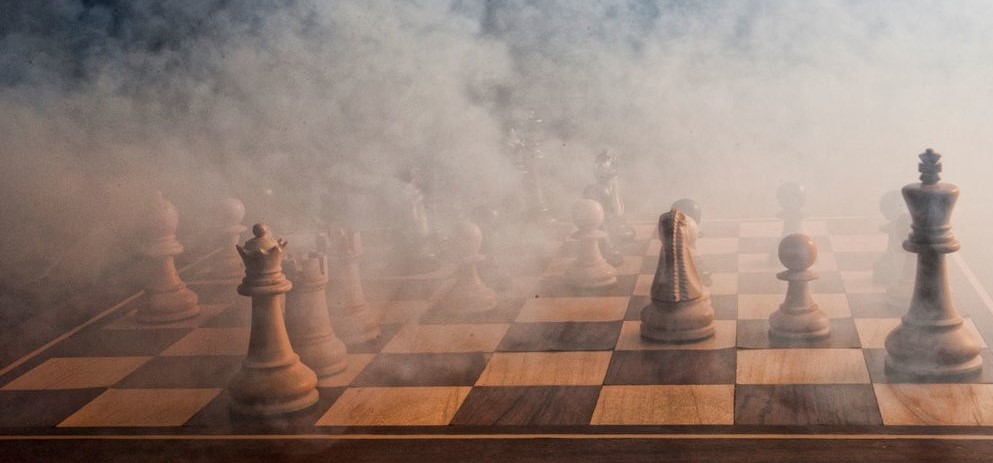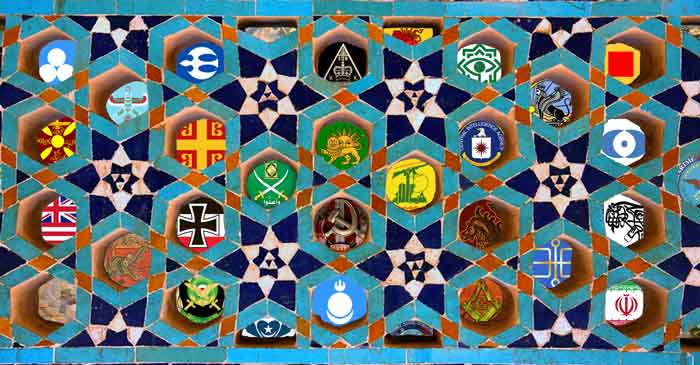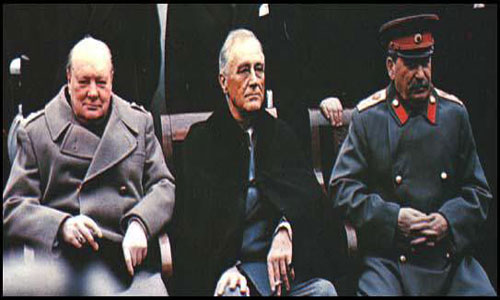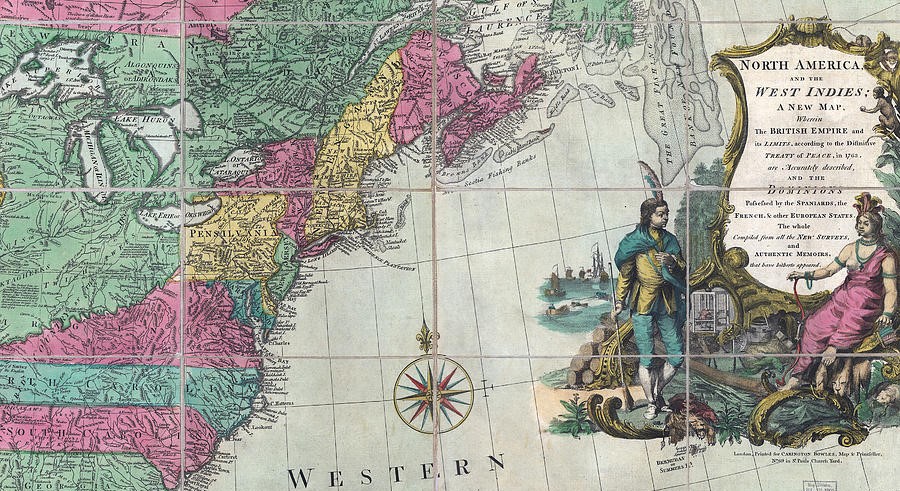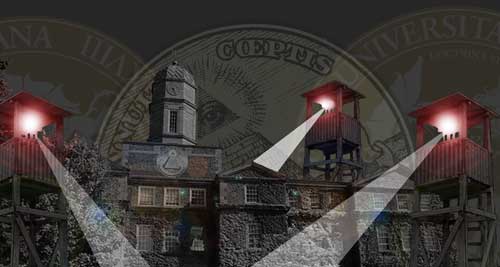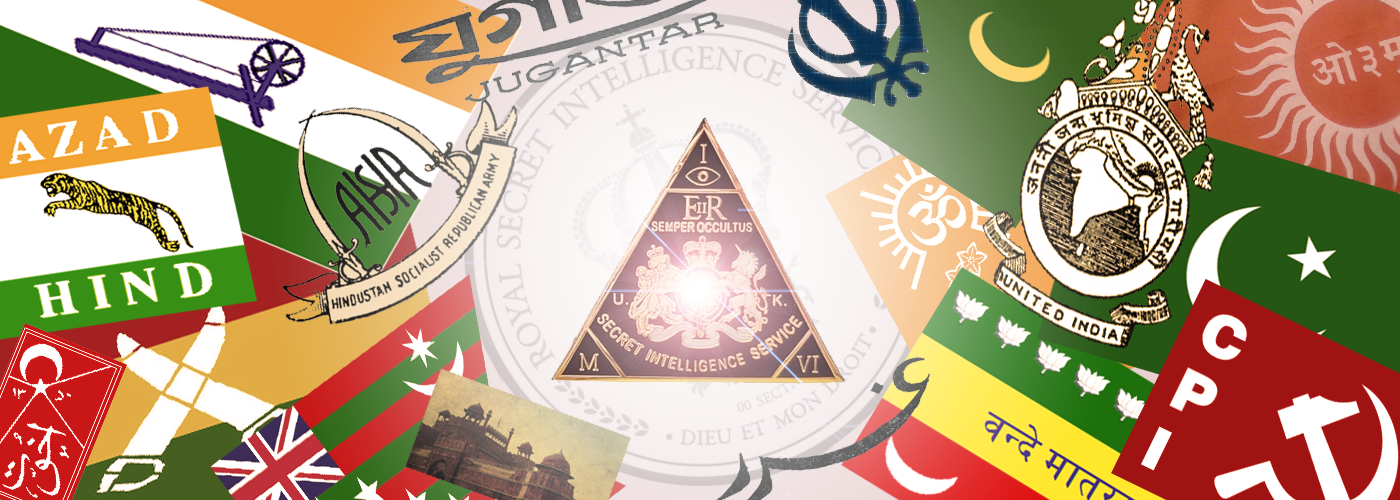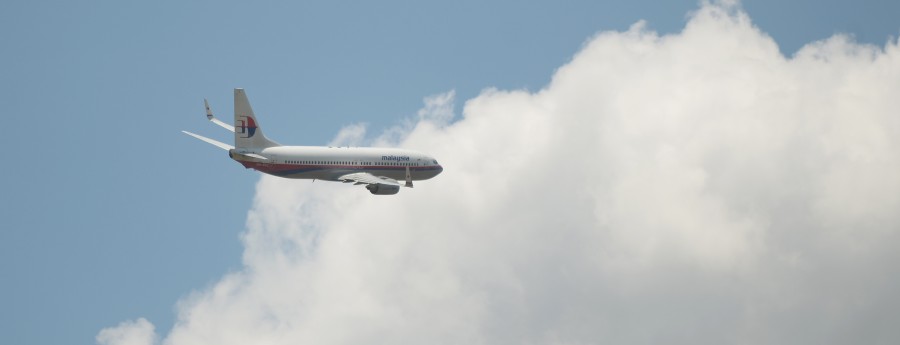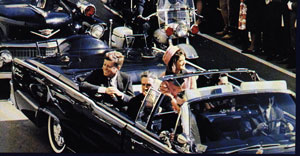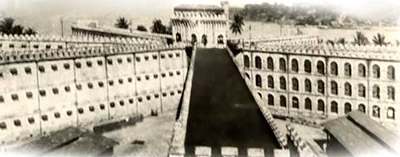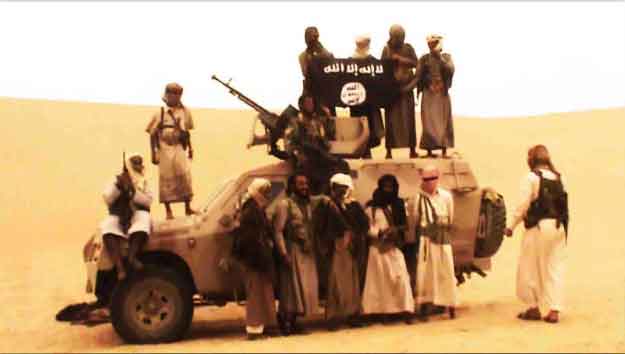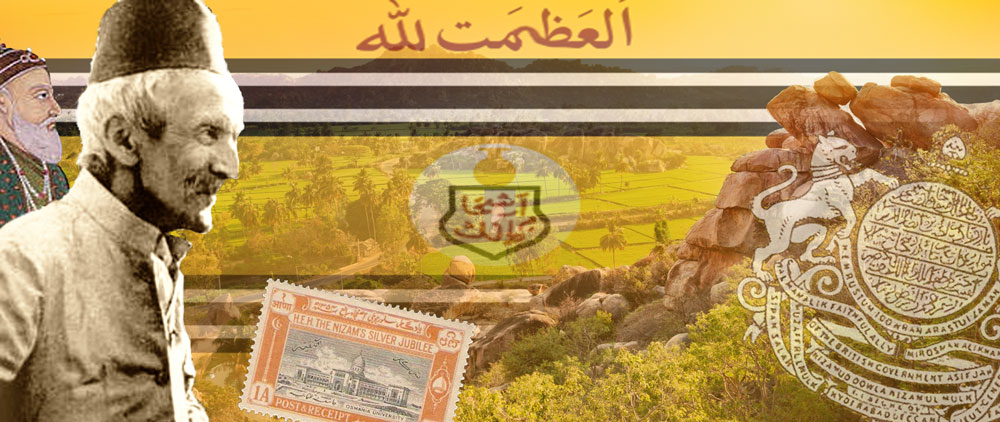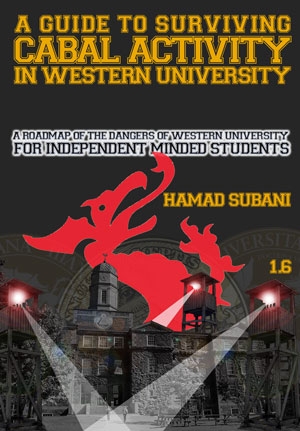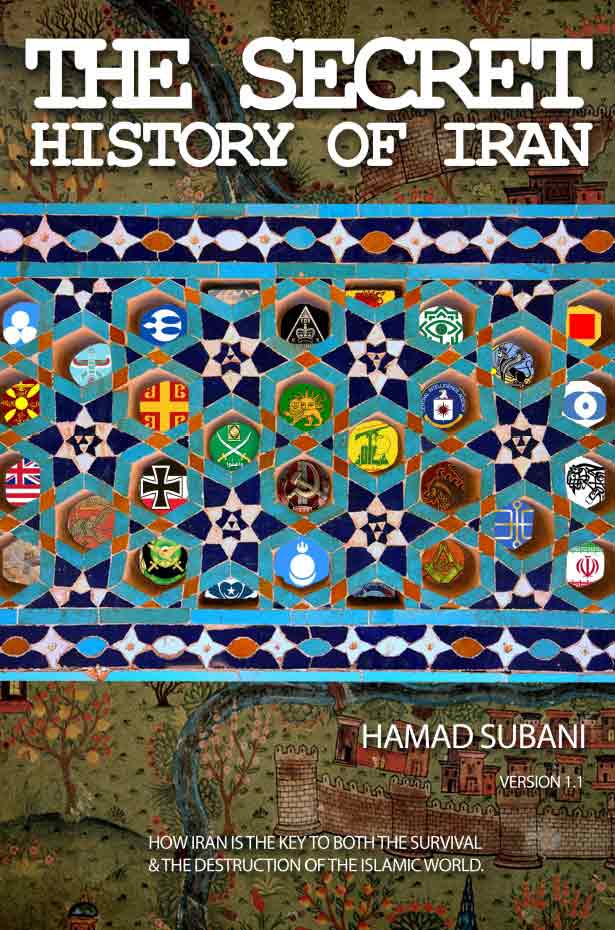
An Introduction to the “1857 Project”
When we refer to the Rebellion of 1857 as a Spook Operation/Project, it is important to note that:

- Violence against the British East India Company was indeed justified (but of course, not against European civilians) based on the simple fact that they had positioned themselves as a public enemy. And public enemies have long been opposed throughout history. What the spooks did was recycle this legitimate resentment to their own ends, and in the process destroy innumerable opposition groups and confiscate their lands for themselves.
- Of those who participated in the 1857 Project, Spooks and their operatives may be less than 1% of the total rebels. But they were in prominent positions, fomenting it every step of the way. Sometimes they were openly fanning the flames, like Nana Sahib and Fazl-e-Haq Khairabadi. Sometimes they were (and will always be) hidden from history, like the numerous operatives of British Intelligence among the sepoys. Sometimes they were publicly visible but were mistaken as innocents caught in the crossfire, like the last Mughal Emperor’s personal physician, Hakim Ahsanullah Khan. Sometimes they may appear to be typical British administrators, but a little bit of digging reveals that they were actually the masterminds behind the Rebellion.
- The most telling feature of Spook participants (among the rebels) is that unlike ordinary rebels, they do not suffer the wrath of the British when the Rebellion failed. They somehow manage to escape/disappear/get pardoned etc. They also happen to be of crypto-Phoenician origin.
- Just because a lot of honourable and patriotic people got entrapped in a fake rebellion which was designed to fail does not make their sacrifices any lesser. The spectacle was so convincingly sold as a real rebellion that even some idealistic Europeans joined the rebels and died with them. Those who were trapped will have the opportunity to testify against those who entrapped them, and later imprisoned/executed them on one big day. Their status will be way higher than those who sat on their asses and did nothing.
- On the other hand, those who collaborated with the British, or worse, participated in violence against the Rebels are never to be forgiven. They can be assured of a special place in hell.
The “Rebellion of 1857” as a Spook Op/Project
Just because a lot of honourable and patriotic people got entrapped in a fake rebellion which was designed to fail does not make their sacrifices any lesser.
Earlier, I had hurriedly presented a theory that the Rebellion of 1857 was a British Op (1,2) and that it actually cemented British rule in India. In fact, I may be the first person to suggest this. No one else seems to have noticed that a movement originating from the British Army cantonments at Fort William, Barrackpore, Kanpur, Meerut, Peshawar, Mhow and Ambala could have also been in control of the same cantonments. The Phoenicians are known to prevent real revolutions by pre-empting them with fake ones. In this case, the loot and oppression of the East India Company was becoming unsustainable. Therefore, it became necessary to channel all the pent up rage into another Phoenician project.
Since most people have been drowned in disinformation regarding this major event, here’s a basic explanation on how this Phoenician project played out. There were some chief Phoenician goals of the 1857 project.
- The Annihilation of the Mughals, and in particular, their iconic capital of Delhi. It’s not that easy to dismantle a civilization, and a way of life that had been flourishing and prospering for centuries, and the confidence and pride it creates in the minds of people. But the first step would be to destroy the main families associated with it, as well as their capital. While the Mughals were not perfect, at least they were not Phoenician.
- The Destruction of a wealthy Aristocratic Class in Uttar Pradesh (and parts of Bihar and Bengal). These were rich, thrifty peasants as well as small landowners who had become landlords. They are sometimes referred to as taluqdars and zamindars. They were mainly Hindu (and among Hindus, mainly Rajput) and they had capitalized on centuries of stable rule provided by the Mughals. They thus had a symbiotic relationship with the Mughals and became the tax-revenue base of the Mughals. They were not perfect administrators, but in my opinion, an open aristocracy is better than a secret Phoenician one. Because people at least know who to point fingers at.
- The Annihilation of the Rohillas and other Afghan-origin powers (Rohilkhand).
- A side project was to get as many other (non-Phoenician) states involved in the 1857 Project as possible. This would allow later confiscation of their lands. For example, there were desperate attempts to get Hyderabad State and some Rajput states of Rajasthan involved in the 1857 Project.
- There were other side-projects as well.
Going by the above, the 1857 Project was an op of British-Phoenician conquest and destruction of the most advanced regions of North India (which back then the most advanced regions of South Asia). Yet whole event continues to be sold to the people of the Subcontinent as their very own and glorious “Rebellion.” Sometimes chains are can be fashioned into jewelry.
The 1857 Project was specifically aimed at Uttar Pradesh
Another major piece of disinformation later propagated by establishment historians and mapmakers is that the Rebellion affected the whole of India, from corner to corner. The actual areas under direct British control in 1815 are below.

They had dismantled all opposition in the red area. Just before the 1857 Project, things hadn’t changed much, except for the fact that the British had gained formal control of big chunks of north India, but without managing to dismantle all opposition. They had entered into alliances with numerous princely states. But that does not mean that they exercised the same degree of control in them as they did in Madras or Bombay. They were in a rough neighbourhood, as far as North India is concerned.
Now take a look at the map of the Rebellion of 1857. Note that the mapmaker encompasses the “extent of British territories” to the entire Subcontinent. Now superimpose the earlier map on this one and you will notice that the areas where everything is under British control and the Rebellion has no effect are those that they controlled in 1815. In other words, while British mapmakers happily drew in all of the Subcontinent as British territory later on, most of it was contested. And a lot of it was still ruled by local princely states who had been forced to make alliances with the British.

Look closely at the brown area, which is supposed to be British areas affected by the Rebellion. This is almost the entire current North Indian province of Uttar Pradesh, it’s as big as the UK. And at its leftmost is the Mughal capital of Delhi. Also included in this region is Rohilkhand.

This area can be characterized as the only part of the Subcontinent which historically remained as “non-Phoenician.” The Phoenicians were not exactly that concerned about the rest of the Subcontinent, as it could be easily taken at leisure. As such, the objective of the 1857 project was to Phoenicianize this specific area by destroying all non-Phoenician groups and social structures.
Going back to the chief Phoenician goals of the 1857 project, notice that the first three goals are centred on the province of Uttar Pradesh.
- The Annihilation of the Mughals; The Mughal royalty headquartered in Delhi, right next to Uttar Pradesh.
- The Destruction of a wealthy Aristocratic Class in Uttar Pradesh, Bihar and Bengal; This class had already been dismantled in Bengal and to a big extent in Bihar. All that remained were the taluqdars and zamindars of the Uttar Pradesh countryside.
- The Annihilation of the Rohillas and other Afghan-origin powers; Rohilkhand is in Uttar Pradesh.
- Other Side-Projects
All these goals will now be discussed in further detail.
1. The Annihilation of the Mughals
The Mughal royalty was headquartered in Delhi. These folks had been there for more than 300 years, and commanded tremendous legitimacy as the rulers of the Indian Subcontinent. Up to this point, the British were pretending to operate in their name by pressuring them into making treaties and concessions. The Mughals had already been greatly weakened by Phoenician intrigues and infiltration. But a new king could still turn things around in the future, and maybe even successfully wage war against the British.
Regardless if the Mughals controlled Delhi or not, the Phoenicians had deemed that they had to go. This was because of one transgression in particular. In the 14th Century, the Phoenicians almost succeeded in establishing a Spook State in Kashmir (The Shah Mir dynasty). This was intended to be the successor of the Delhi Sultanate. But in 1589, Mughal Emperor Akbar annexed Kashmir and a wannabe king connected to the Shah Mir dynasty (Yousuf Shah Chak) and his royal family was forcible resettled in Bihar where he died. His grave remains in Bihar. Since then, the “Kashmiri” branch of Phoenicians kept resurfacing in a cornucopia of anti- Mughal conspiracies. Some allege that political Sikhism was one such anti-Mughal conspiracy.
- Is it a coincidence that some early gurus of political Sikhism emerge in Bihar (rather than Punjab) where the Shah Mir royalty was exiled?
- Is it a coincidence that Sikhs were brainwashed into fighting the Mughals with a fanaticism that even surprised the British?
- Is it a coincidence that the Sikh Empire would take an unusual interest in wrestling Kashmir from the Mughals?
- A confidante of the last Mughal Emperor, Hakim Ahsanullah Khan would trick the Emperor into leaving the security of his fort, where he would be captured by the British. Is it a coincidence that Hakim Ahsanullah Khan is of Kashmiri origin?
- Is it a symbolic coincidence that the British would enter Delhi on the morning of 14th September 1857 after blowing up the Kashmir gate? (The intended date was 11th September, which is sacred to the Phoenicians).
- Is it a coincidence that Sikhs would play a pivotal role in the wiping out of the Mughals during and after 1857? What could explain the actions of some Sikh Rajas, such as those of Jind, personally showing up with their families at the siege of Delhi in 1857?
- Is it a coincidence that the Dogra rulers of the massive princely state of Kashmir showed extreme hatred to the rebels? Rebel sepoys who fled to Kashmir State were all executed.[1]An Indian Nationalist (Later attributed to Vinayak Damodar Savarkar), The Indian War of Independence of 1857 (London: Unknown 1909).p 143
- Is it a coincidence that the British would attach Delhi to the the Punjab Province?
- Is it a coincidence that the Dogra dynasty imposed upon Kashmir was closely connected to Sikhs? In fact, they are considered interchangeable.
- Is it a coincidence that Dogra Kashmir was adopted and fostered by the British in the hope of becoming an independent nation?
2. The Destruction of taluqdars and zamindars of the Uttar Pradesh countryside
The mainly Hindu (and mainly Rajput) taluqdars and zamindars administered the fertile Doab region of Uttar Pradesh, which is crisscrossed by major rivers. This region’s agrarian economy, developed during early Mughal times, had become the military-agricultural complex of the Mughal Empire. The taluqdars and zamindars had in turn, evolved into an aristocratic class. They had a symbiotic relationship with the Mughals, and they had taken advantage of the stability and consistency of Mughal rule to transform Uttar Pradesh into the most advanced and prosperous agricultural societies of South Asia. The Mughals on the other hand, could depend on them for revenue to raise armies for a reconquest of the entire Indian Subcontinent (just as Aurangzeb had done in the past).
In other words, Uttar Pradesh alone was enough for the Mughals to continue as the rulers of India!
In other words, Uttar Pradesh alone was enough for the Mughals to continue as the rulers of India!
There were even more industrious Hindu taluqdars and zamindars in Mughal Bengal, who had managed to transform that region into an agricultural super-economy. To quote,
Taluqdars or Talukdar were aristocrats who formed the ruling class during the Delhi Sultanate, Bengal Sultanate, Mughal Empire and British Raj. They were owners of a vast amount of lands, consistently hereditary, and were responsible for collecting taxes. The Taluqdars played helpful roles in the progression of Indian architecture and Indian economy during the reign of Emperor Shah Jahan and Aurangzeb, particularly in Bengal Subah, the most economically developed province in South Asia.
Unfortunately, these taluqdars lacked the obstinacy and fighting spirit of the Rajput ones of Uttar Pradesh (and parts of Bihar). They easily succumbed to British rule early on. Later British Bengal becomes infamous for three ghastly famines, in which up to 14 million people perished.[2]Throughout British rule, a number of unprecedented famines happened.
Throughout the ages, the Phoenicians tried numerous tricks to destroy the talukdars of Uttar Pradesh. Immediately after Aurangzeb, the Sayyid brothers tried to auction off agricultural land in the Uttar Pradesh to the highest bidders every year, overriding the talukdars. But the talukdars would not allow access to their lands. The Nawabs of Awadh were established in the region after the fall of the Sayyd brothers specifically to deprive Mughal Delhi of access to the agricultural economy of Uttar Pradesh. But they only held symbolic power, and there was a big risk of a future Mughal king retaking Uttar Pradesh. The Nawabs of Awadh also lacked the military might to destroy the talukdars. So it was later arranged for British East India Company to start “administration” of the region, but even the British were unable to dismantle the talukdars. To quote,
Being powerful peers, similar to those of Europe in the Middle Ages, after the decline of the Mughal state the Taluqdaris were to withstand the revenue collectors of the Colonial Powers while also bringing given number of villages under their dominion, and thus, according to many historians, the rapid development and enhancing power and wealth of the Taluqdaris during the early 19th century caused tremendous difficulties and concerns to the British East India Company. The majority of the Taluqdaris constructed themselves enormous mud fortified towers throughout tropical forests and maintained immense bodies of armed affinities.
The Taluqdars of Oudh were baronial, with some representing the ancient families. In other cases, the historical equivalent in Britain is similar to a member of the landed aristocracy, or perhaps a Lord of the Manor. In contemporary usage, the term is often regarded as a noble tribe and clan, although it may convey some diverse meanings in different parts of the Indian subcontinent. It is mentioned that throughout Oudh till Bihar, there was a presence of large numbers of Rajput Taluqdars and they played an important role in 1857 in the region.
In 1856, the Nawabs of Awadh colluded with the British to handover complete control of the State to the British. This was done because even as rulers, the Nawabs of Awadh did not have the gall to disturb the small landowners and talukdars. The British then proceeded to confiscate their estates, by hook or by crook. Lord Dalhousie created the Inam Commission, which specialized in these confiscations. Of the 35,000 estates the Commission inquired into, 60% ended up being seized by the British![3] An Indian Nationalist (Later attributed to Vinayak Damodar Savarkar), The Indian War of Independence of 1857 (London: Unknown 1909).p 43.
Later in 1857 we notice rebels gleefully burning down British record offices, which were used for such acquisitions. In fact there is reason to believe that in Uttar Pradesh, rebel sepoys involved in the Rebellion were a fraction compared to talukdars and their volunteer armies, who had happily joined the Rebellion.
From every village and every field came the patriotic rural population, with determination to drive away the Feringhis or die in the attempt.[4]An Indian Nationalist (Later attributed to Vinayak Damodar Savarkar), The Indian War of Independence of 1857 (London: Unknown 1909).p 332
[……]There were thirty thousand Sepoys and fifty thousand volunteers gathered together in that city [Lucknow]. [5]An Indian Nationalist (Later attributed to Vinayak Damodar Savarkar), The Indian War of Independence of 1857 (London: Unknown 1909).p 332
[…….]The Sepoys during the siege of the [Lucknow] Residency never came on as boldly as the Zemindari levies and Nujeibs. [6]Quoting Russel’s Diary. An Indian Nationalist (Later attributed to Vinayak Damodar Savarkar), The Indian War of Independence of 1857 (London: Unknown 1909).p 331. Note 1
[…….]When, finally, the sweep made over Oudh by Lord Clyde forced the remnant of the fighting class to take refuge in the jungles of Nepal, the survivors often preferred starvation to surrender. The agricultural population, the Talukdars, the landowners, the traders, accepted the defeat when, after that long struggle, they felt that it was final. [7]Quoting G.B. Malleson in Red Pamphlet. An Indian Nationalist (Later attributed to Vinayak Damodar Savarkar), The Indian War of Independence of 1857 (London: Unknown 1909).p 425

The Rajput taluqdars also emerged as some of the most notable rebels. An 80 year old Rajput taluqdar named Kumar Singh led the Indian Rebellion of 1857 in Bihar. Several of his estates had been confiscated by the British. He even managed to occupy the British district headquarters in Arrah. He then made a safe retreat back to his home estate of Jagdishpur. And when the British came looking, he managed to kill 80 out of the heavily armed 199[8]An Indian Nationalist (Later attributed to Vinayak Damodar Savarkar), The Indian War of Independence of 1857 (London: Unknown 1909).p 353 British officers dispatched to take back Jagdishpur. This was done without artillery, and without any well trained soldiers, and few of his soldiers had guns. He ended up succumbing to his injuries but died as a free man on his own estate of Jagdishpur. The secret of his success was his acting on his own initiative, in complete secrecy, and avoiding any collaboration with Nana Sahib or the rebel leaders at Lucknow. Had he instead fallen to the pleas of Nana Sahib to come into open battle with the English (instead of guerilla warfare and surprise attacks on his own turf), he too would have met the fate of the other rebels. Another brave Rajput landlord, Rana Beni Madho from Rae Bareli, would die fighting British-Gurkha regiments. Yet another brave Rajput taluqdar near Bilgram refused to let his fort fall to the British, and ended up being killed by the British.
Remember that the people and economic classes we discussed should be considered extinct. They only exist in hard-to-find historical texts. If you travel to Uttar Pradesh today looking for their remnants, you will be in for a rude shock, as the Phoenicians have inverted everything. From 1857 onwards till today, Phoenicians have subjected Uttar Pradesh to a massive campaign of illiteracy, deindustrialization, communalization and backwardification. Today, the province relies on the taxes paid by rich Southern states of India to sustain itself. It is also home to numerous Phoenician Spoookopolis’ which will be discussed later. There are future plans to partition the region into separate nation states.
Remember that the people and economic classes we discussed should be considered extinct. They only exist in hard-to-find historical texts.
Uttar Pradesh versus the World?
Going by my earlier thesis, the entire 1857 project was aimed specifically at Uttar Pradesh. This is a rather asymmetric proposition. And it was. Maybe this region had indeed reached such levels of civilizational development that the Phoenicians had to throw in everything they had their hands on to dismantle it.
The Spookdom of Punjab is Mobilized in Advance


In 1848, the Phoenicians appointed Lord Dalhousie as the new Governor-General of British India. He arrived in India in 1846, specifically to supervise the 1857 Project. In preparation for the Rebellion, he made the Punjab part of the British Empire. This was an area as big as Germany. How could it be “transferred” to the British Empire from the Sikh Empire without huge wars and violence? There is only one answer. Both Empires were interchangeable Phoenician constructs. We are told that there were two major wars before the transfer happened. But how did the Sikhs who showed perpetual resistance to the Mughals acquiesce so quickly? It seems that the Sikh Empire became the British Empire. And as we shall see, the ancient Spookdom of Punjab would be the place where forces were raised to not only crush the Rebellion later on, but to completely destroy all the non-Phoenician states, people, classes and groups who joined the Rebellion.
Armies much bigger than those of the rebels were being raised in advance. Many of these British-Indian soldiers later advancing on the rebels in Mughal Delhi were Sikhs, and they had been repeatedly used against the Mughals long before the British showed up. The majority of European soldiers were stationed in the Punjab to exclusively focus on training these new sepoys. The regular citizenry of British Punjab were directed to focus exclusively on agriculture as peasants, so that intellectual development was minimized. Special Sikh-only regiments were created to protect Phoenician-tier British officers throughout British garrisons in Uttar Pradesh.
It seems that the Sikh Empire became the British Empire. And as we shall see, the ancient Spookdom of Punjab would be the place where forces were raised to not only crush the Rebellion later on, but to completely destroy all the non-Phoenician states, people, classes and groups who joined the Rebellion.
The crypto-Phoenician Punjabi princely states of Patiala, Nabha and Jind were soon guarding the route from the British Army High Command in Ambala, all the way to Delhi, allowing British-Punjabi forces to move towards Delhi. The main forts in Punjab, the ones at Lahore, Amritsar and Firozpur remained firmly in British hands without a whimper of revolt. In fact, a prophecy was circulating among the Sikhs that Mughal Delhi would only be destroyed if the Sikhs and the British joined hands.[9]An Indian Nationalist (Later attributed to Vinayak Damodar Savarkar), The Indian War of Independence of 1857 (London: Unknown 1909).p 120. Sepoys at Mardan who wanted to join the Rebellion set off for Delhi, but ended up being butchered and killed while crossing the Punjab.
Was there no anti-British sentiment among the Sikhs of the Punjab? We do get some scattered instances, like the Kuka Movement. But within decades, the Phoenicians managed to switch its objectives from boycotting the British to attacking Muslim butchers (even though the cow is sacred to Hindus, not Sikhs).
The advance Secret Arrangement with the Rana of Nepal
The then Rana of Nepal had been invited to London just before 1857 by the Phoenicians, where he hobnobbed with Azimullah Khan, a confidante of future rebel leader Nana Saheb. It was agreed that he would contribute Gurkha regiments to put down the Rebellion.[10]The Gurkha regiments were later active in the British advance on Lucknow and Rohilkhand A secret agreement was reached with the Rana of Nepal, that in the last stages of the Rebellion, all the rebels would be pushed towards the Himalayas. This was northern parts of Uttar Pradesh, bordering Nepal. This was where the Gurkha regiments of the Rana of Nepal would finish them off. Crypto-Phoenician rebel leaders like Azimullah Khan, the last Nawabs of Awadh and Nana Sahib were to be secretly given residence at one of the Rana’s royal palaces in Kathmandu. V. D. Savarkar tries to obfuscate Nana Sahib’s flight to Nepal. But he does admit that the last Nawabs of Awadh were given refuge there. To quote,
History does not know for certain what happened to Nana Sahib after the episode of this letter. Bala Sahib [his brother] died in the forest in circumstances of self-imposed misery. The Begum and her young son were, later on, given shelter by Jung Bahadur [the Rana of Nepal].[11]An Indian Nationalist (Later attributed to Vinayak Damodar Savarkar), The Indian War of Independence of 1857 (London: Unknown 1909).p 425
Why weren’t the British looking for Nana Saheb, when he was the prime accused in a massacre of European civilians at Kanpur? He also wrote letters, non-stop, to literally every (non-Phoenician) ruler in India, requesting them to join the Rebellion. These letters were signed by him and bore his seal. Many such letters would fall into British hands. But they didn’t seem to care.


We are told that the last (ruling) Nawab of Awadh Wajid Ali Shah passed away in 1856. It is more likely that he later joined his wife and child in Kathmandu. Birjis Qadr was so homesick in Kathmandu that he organized Lucknow style mushairas (poetry recitals) in Kathmandu. In 1887 he quietly returns to India and the British don’t even care. But it seems that this move raised some eyebrows, and he is suddenly “murdered” in Calcutta. He very likely faked his death, and all the descendants of the Nawabs of Awadh returned to British positions in Awadh, under new identities.
In the last stages of the Rebellion, 60,000 rebels were indeed pushed against the Himalayas as planned, and had no recourse but to try to flee to Nepal.[12]An Indian Nationalist (Later attributed to Vinayak Damodar Savarkar), The Indian War of Independence of 1857 (London: Unknown 1909).p 423 but were met with the bullets and bayonets of the Gurkhas. The legendary Kunwar Singh’s brother Amar Singh and his ally Meghar Singh Sakarwar were later forced to flee to Nepal when the British came chasing them with seven regiments, but were handed over to the British, and ended up being executed. 150 ladies of the royal house of Kunwar Singh committed suicide rather than fall captive to the British.
So on one hand we have the Rana of Nepal protecting the very leadership and masterminds of the Rebellion in his own palace, but on the other hand, he goes above and beyond in ensuring the death and destruction thousands of their rebel followers. Can there be more direct evidence that these so-called rebel leaders were in fact coordinating the destruction of Uttar Pradesh in collusion with the British?
So on one hand we have the Rana of Nepal protecting the very leadership and masterminds of the Rebellion in his own palace, but on the other hand, he goes above and beyond in ensuring the death and destruction thousands of their rebel followers. Can there be more direct evidence that these so-called rebel leaders were in fact coordinating the destruction of Uttar Pradesh in collusion with the British?
Advance Mobilization of additional British Resources
The British had recalled all British-Indian troops from the Persian, Chinese and Burmese fronts to deal with the Rebellion of 1857 well in advance of the Rebellion itself! The British knew that their Nepalese Gurkha sepoys had no interest in mutinies and kept them stationed separately in British bases.
In addition to the Punjab, the British were receiving fresh recruits and weapons on a continual basis from Madras, Bombay, Calcutta, and their allied princely states, Nepal, Burma and all other parts of British India throughout the 1857 project.
The British Navy was also hard at work, bringing in soldiers and equipment into Calcutta, from where they would be put onto smaller boats towed up the rivers by steamers, all the way into Uttar Pradesh.
The Advance Construction of a Penal Settlement in the Andamans
The long abandoned plan for a penal settlement in the Andamans was revived by the British suddenly in October 1856.[13]S.N. Agarwal. The Heroes of the Cellular Jail Rev. Edition (New Delhi: Rupa) 14. This was seven months before the Rebellion of 1857. This confirms that the British were already planning the logistics for dealing with the prisoners of the Rebellion long before it actually commenced!
A “Rebellion” or an Engineered Trap sold as a “Rebellion”?
A real rebellion is one in which there is a reasonable chance of success. But this was a trap. From the first day, it guaranteed British conquest from the very onset. With the Phoenicians controlling both sides, there was no way Uttar Pradesh could escape the wrath and permanent conquest of the Phoenicians.
The death toll is estimated at 6000 for the British not including their local supporters and 800,000 for Indians and rebels. By all accounts, this was an asymmetric war, and the British actually paid a small price to end a civilization that had more promise, prosperity and potential than anything comparable in South Asia. They also conquered an area bigger than Britain. The Phoenicians managed to achieve such “efficiency” because they successfully deceived Indian commoners that this was actually their very own glorious but messy “Rebellion.”
If such huge resources were mustered for the conquest of Uttar Pradesh, which area-wise, is still a small part of India, then it goes without saying that this region was host to an unconquerable people, a much more developed economy, and much more refined culture, than we are told.
3. The Annihilation of the Rohillas and other Afghan-origin powers.
Were it not for the Rohillas and other Afghan-origin groups who had later settled in Uttar Pradesh, the Phoenicians would have taken Delhi and become rulers of India in 1760 itself (through the crypto-Jewish Maratha Peshwas), making British colonization unnecessary. Instead, after the Third Battle of Panipat which was fought by these Afghan groups, the Chitpavani Peshwas had to forsake not just all further attempts at displacing the Mughals, but they lost control of the Maratha confederacy itself! The Peshwas personally lost many of their leaders and close family members in that battle. We then see the British being hurriedly invited on the scene to prevent other non-Phoenician groups from taking advantage of the power vacuum. The so-called Anglo-Maratha wars were intended to destroy non-Phoenician Maratha groups who had crept into power (Because the Chitpavani Peshwas no longer had the power to do so).

The Chitpavani Peshwas could never get over the reality that they had come within days of becoming the Emperors of all of the Subcontinent, and were reluctant to leave North India. Unlike the other Marathas who retreated to Maharashtra, they settled down in Spookopolis’ in Madhya Pradesh, where they would intrigue with the Sikhs and the British against Mughal Delhi. They had access to Phoenicians in the Mughal court, who in turn, had destroyed the Mughal military machine from within. But nothing could be done about the Rohillas and other Afghan-origin groups who had settled in the Uttar Pradesh countryside, as they were not dependent on salaries from Delhi. Yet, they would still rise to defend Delhi on every occasion. But the Peshwas kept trying. To quote,
One of the first things the Chitpavani Peshwas would accomplish through Shah Alam II was having him unseat Zabita Khan. Then the Mughals and their Maratha units would combat Zabita Khan. Mahadji Scindia would personally lead the devastation Rohilkhand and even desecrated the grave of Najib ud-Daula. But this campaign would come to an abrupt end after the Maratha armies were forced to withdraw from the North in 1773 after the murder of Narayan Rao Peshwa in Pune.

In 1764, Rohilkhand was transferred to nominal British “administration” in collusion with the Nawabs of Awadh. This was done so that Rohillas could not participate in the upcoming Rebellion of 1857 as an independent force. There was too big a risk of them establishing their own state by taking advantage of the confusion. To quote,
With the Marathas no longer available to devastate Rohilkhand, Awadh went to war against Rohilkhand, joined by the East India Company. Hafiz Rahmat Khan Barech was killed in 1774 and all of Rohilkhand came under British occupation. Many Rohillas fled across the Ganges into the dense forests on the other side. The British under Warren Hastings followed them and engaged in ethic cleansing and genocide to fully destroy them. Later, the British would set up a Shiite princely state named Rampur on the area of Rohilkhand.
Later during the course of the Rebellion, we see the Bangash Nawabs of Farrukhabad (close allies of the Rohillas) being selectively targeted by the British. The British counteroffensive at the very last focused on driving all rebels into Rohilkhand, so that maximum destruction could be meted on the entire area. To quote,
Thus, these different [British] forces, including those of the commander-in-chief and others, were marching in a line to drive out the Revolutionaries to a man further and further to the north till they were pushed into Rohilkhand; and, then, the idea was to annihilate them by one supreme effort.[14]An Indian Nationalist (Later attributed to Vinayak Damodar Savarkar), The Indian War of Independence of 1857 (London: Unknown 1909).p 363
[……]
After these different divisions had swept off the Revolutionaries from the province of Oudh towards the north and thence to Rohilkhand, the commander-in-chief got all the forces united and marched on to Rohilkhand in person. All the leaders of the Revolutionaries had now assembled in Shahjahanpur. There was Nana Sahib of Cawnpore and Moulvie Ahmad Shah.[15]An Indian Nationalist (Later attributed to Vinayak Damodar Savarkar), The Indian War of Independence of 1857 (London: Unknown 1909).p 364-365
In the aftermath of the Rebellion, we find five major British Armies simultaneously converging on Rohilkhand! Given that Delhi had already fallen, this is quite an overkill. The head of one of these armies, Major General Nicholas Penny, gets killed in this campaign. Another army is led by Colin Campbell, the Commander-in-Chief of British India!
In the aftermath of the Rebellion, we find five major British Armies simultaneously converging on Rohilkhand! Given that Delhi had already fallen, this is quite an overkill. The head of one of these armies, Major General Nicholas Penny, gets killed in this campaign. Another army is led by Colin Campbell, the Commander-in-Chief of British India!
Three of these armies converge on the Rohilla stronghold of Barreilly on 5th May 1858, where a major battle occurred, followed by a massacre of the citizenry. Yet most people of the Subcontinent are clueless about it and establishment historians have done their best to obscure this event, which was as significant as the fall of Delhi.



The Rohillas had never been forgiven by the Phoenicians. And therefore, a key objective of the 1857 Project was to permanently uproot these groups. It comes as no surprise that the man selected to play a big part in this was none other than Nana Sahib Peshwa. On 5th May 1858, the British would move on the Rohilla stronghold of Bareilly, and destroy it. But just a day before, something strange happened. Nana Sahib, the leader of the rebels in the 1857 Project showed up in person at Bareilly. It is wondrous how he made it undetected through British lines. Some claim he had come to make note of Rohilla preparations, positions and numbers for the British. His fourth generation ancestor Peshwa Vishwasrao had been selected by the Phoenicians as the future Emperor of India. But on the battlefield of Panipat in 1761, the nearly starved Vishwasrao was struck down by a Rohilla bullet. Nana Saheb had come to Rohilkhand for revenge!
4. Other Side Projects
Attempts to sell the Rebellion to Hyderabad State

There was a desperate effort to make Hyderabad State join the Rebellion so that it could be snatched away, which has already been covered here. It seems that the prudency of one man, Salar Jung I, gets sole credit for preventing such a calamity from happening. Salar Jung I would later get assassinated by the Phoenicians in 1883.
It seems that Phillip Meadows Taylor was tasked with this op of selling the Rebellion to Hyderabad State, and Raja Venkatappa Nayaka of Surapur (Shorapur) on the border of Hyderabad State was a local operative of his. This Raja of Surapur had also managed to dupe the princely states of Koppal and Nargund into joining the Rebellion (and both their rulers ended up being slaughtered later).
They had even duped the Imam of the Mecca Mosque (the main mosque in Hyderabad) into inciting people to participate. The Imam was later sentenced by the British to deportation to the Andaman islands, where he died. As for the Raja who was literally caught in act, something strange happened. To quote,
However, through the intervention of Meadows Taylor, the sentence of this patriotic young Raja was reduced from death to some years transportation. A short time afterwards, when about to leave for the Andamans, the Raja took a pistol belonging to one of his English warders and, at a moment when no one was near, shot himself dead. He had previously said, “I prefer death to transportation! Prison and transportation? The meanest mountaineer of my subjects will not remain in gaol—what then of me, their king?”[17]An Indian Nationalist (Later attributed to Vinayak Damodar Savarkar), The Indian War of Independence of 1857 (London: Unknown 1909).p 412-414
Or maybe he was transported (in First Class) to London instead.
Later in the 1870s, there was another attempt to involve Hyderabad State in an urising, by diverting a genuine (and successful) Maratha guerilla leader named Vasudev Balwant Phadke to organize rebellion in Hyderabad State. But Salar Jung I would have none of it.
The Destruction of Meo/Mewati-Rajputs

Another group that faced genocidal levels of violence under the pretext of putting down the Rebellion were the fiercely independent Rajput Meo/Mewati Muslims. Thinking that the Rebellion was a genuine one, they joined en masse, along with an equal number of Hindu Rajputs. To quote,
As soon as the revolt began, the Mewatis without losing any time, actively participated in the revolt. But the Mewati had to fight simultaneously on three fronts. On the first front, they had to fight against the British army and police; on the second front, they had to fight against the British loyalists such as the Khanzadas of Nuh, the Rajput of Hathin and hondsi,, the Rawat jats of Hotel and the Kayasth of Sahna and on the third front, they had to fight against the Army of the British loyalists states such as Alwar, Bharatpur and Jaipur. The Mewat area of Haryana specially became the centre of struggle against these forces. The brave Mewatis fought and defeated all these powers. They, not only, removed the tyrannical rule of East India Company from the Mewat area of Haryana, but also, the grip of the East India Company became loose, to some extent, in the Mewat areas which were under Alwar and Bharatpur States.

When the British launched their offensives against the rebels, we find General Neill’s army engaging in systematic genocide against the Meo Muslims, burning entire Meo villages to the ground near Allahabad. The remains of their destroyed villages are still visible. It seems these particular villages were always a thorn on the side of the Nawabs of Awadh, because of their fiercely independent citizenry. One Meo Muslim secretly followed General Neill to Lucknow. When General Neill entered a bazaar, this Muslim shot and killed him at an opportune moment.[18]Neill was commemorated by the British by having a cantonment in Lucknow and an island in the Andamans named after him. Later, the British erected a towering monument for Queen Victoria in the region, to remind the remainder of the Meo Muslims who was in charge.
After 1857, the Phoenicians supplanted the princely states of Bharatpur and Alwar over the Meos for the sole purpose of oppressing them and keeping them contained. In the partition of 1947, Meos were again subject to targeted violence when they refused to migrate to Pakistan. The violence was so excessive that Gandhi personally came to one of their villages to calm things down.

The Meo princely state of Ferozepur Jhirka was abolished by the British following 1857.
Attempts to sell the Rebellion to the Rajput princely states of Rajasthan
Towards the end of the Rebellion, rebel leader Tatya Tope resurfaced in different parts of Rajasthan. His family safely resided in the Spookopolis of Gwalior. Occasionally, he would rob weaker rulers and sometimes even levy taxes on those using the roads. The British were never able to fully conquer Rajputana and this was a once-in-a-bluemoon opportunity. He showed up in the most powerful Rajput princely state of Jaipur, where the Rebellion had gained many sympathisers. He wanted to convince the Rajput rulers of the state to support him, so that the British could later annex all their state, but they refused.
Strangely, pursuing British forces never caught up with him. Tatia Tope then passes through the Spookopolis of Indore and re-emerges near Baroda. There, he persuades Man Singh of Narwar (another Rajput who had a long dispute the neighbouring Gwalior which had annexed his territory)[19]An Indian Nationalist (Later attributed to Vinayak Damodar Savarkar), The Indian War of Independence of 1857 (London: Unknown 1909).p 441 to join forces with him. Tope is joined by the mysterious Mughal prince named Feroz Shah.[20]Very little is known about this prince except that he surfaces here and there in the very last stages of the Rebellion, and always escapes being captured. He then somehow escapes to Persia, we are told. But Man Singh has a change of heart and betrays Tope to the British. We are told that Tope was hanged at Shivpuri, the summer capital of Gwalior.
Attempts to sell the Rebellion to Benares State
The city of Benares is sacred to Hindus. The Phoenicians had long desired to take control of it, as doing so would also allow them to control Hindusim, which they wanted to steer towards their own projects. The only problem was that an obstinate Rajput clan had ruled over the city.
There was an earlier attempt to make Benares State fall to the British by having a vizier associated with the neighbouring Awadh state organize a token massacre of the British at Benares in 1799. But the then Rajput ruler of Benares did not take the bait. Benares did not take the bait in 1857 either, despite the fact that the British engaged in all sorts of provocative massacres of its citizenry.
Benares State was once again targeted post 1857 for yet another staged “Rebellion.” Prominent Ghadr Party operative from San Francisco Kartar Singh Sarabha visited this place around the beginning of World War I, to stage a “Rebellion” against the British.[21]S.N. Agarwal. The Heroes of the Cellular Jail Rev. Edition (New Delhi: Rupa) 181. but with limited success. Later, Sachindra Nath Sanyal showed up in February 1915 to lead a “Rebellion,” but due to a miscommunication, he arrived two days late and got arrested.
Attempts to use the Rebellion to Conquer Afghanistan (via the Russian Empire)
The British Empire had always sought to control and subjugate the independent-minded people of Afghanistan. But their first attempt ended up in a total rout. This put British plans on hold. But the Phoenicians could not tolerate the existence of Afghanistan as an independent country.
When the 1857 Project came on the drawing board, the Phoenicians realized that after their contrived “Rebellion,” Afghanistan would still be an independent country because they were not part of the Mughal India (and therefore they would escape the fate of Mughal India). But historically, Afghans had assisted the Mughals, as in the Third battle of Panipat. The Phoenicians realized that they could tap into this common ground to make Afghan rulers be involved in the Rebellion and assist Mughal Delhi. And maybe thousands of British Intelligence operatives could be dispatched to Afghanistan, disguised among the multitudes of rebel sepoys. In the aftermath, Afghanistan would face war from Britain. But since Britain was still not in position to conquer them, it was decided that the war would be used to push Afghanistan into a Russian alliance, and then into the Russian Empire. In other words, if the people of Afghanistan could never be part of the British Empire, maybe they could be incorporated into another Phoenician construct, the Russian Empire.
If the people of Afghanistan could never be part of the British Empire, maybe they could be incorporated into another Phoenician construct, the Russian Empire.
Something similar had been done with Crimea. The British had intervened as “allies” of the Ottomans but their intervention resulted in it falling to the Russian Empire. I have covered this war in a book. British higher ups deliberately sabotaged British-Ottoman victories so that the Russian Empire would get victory, and this was done at the cost of hundreds of British common soldiers. On one occasion, 600 of them they were charged into Russian cannons. Even the Phoenicians were surprised by the robot-like response of their British subjects. Lord Alfred Tennyson later makes a pun about it:
‘Forward, the Light Brigade!’
Was there a man dismay’d?
Not tho’ the soldiers knew
Some one had blunder’d:
Theirs not to make reply,
Theirs not to reason why,
Theirs but to do & die,
Into the valley of Death
Rode the six hundred.
When all this was happening, Rebel leader Nana Sahib’s man Azimullah Khan was in Crimea! He was interviewed by a military correspondent of the London Times[22]An Indian Nationalist (Later attributed to Vinayak Damodar Savarkar), The Indian War of Independence of 1857 (London: Unknown 1909).p 60 who was covering the Russo-Turkish war. He was even allowed to sleep in the correspondent’s tent! Maybe the purpose of this interview was to give him some credibility as a rebel leader when he would later visit Afghanistan’s rulers. He was trying to make some kind of alliance with Russia, with regards to supporting the Afghan rulers against the British.
The British were certain this would work out, and established the city of Rawalpindi as a Forward Operating Base for this upcoming war with Afghanistan just before 1857. Abbotabad and Murree were also established around this time. The port of Karachi was also developed to enable a British naval supply chain to the region.
Later, Nana Sahib officially reached out to the ruler of Afghanistan[23]An Indian Nationalist (Later attributed to Vinayak Damodar Savarkar), The Indian War of Independence of 1857 (London: Unknown 1909).p 121 hoping to secure his cooperation. But the ruler of Afghanistan was suspicious and reluctant.
CONTENTS
- The Secret History of British India’s “Freedom Movements.”
- An Introduction to the “1857 Project”
- The 1857 Project as a Spook Playbook for later Ops in the Subcontinent
- Phoenician Spookopolis’ Across the Subcontinent
- A (long) note on Fazl-e-Haq Khairabadi
- The Strange Fate of Jhansi State
- Later “Freedom Movements” that follow the 1857 Rebellion Playbook
- How the Blueprint Unfolded Part I – The Bengal Front
- How the Blueprint Unfolded Part II -The Ghadr Party and the Punjab Front
- How the Blueprint Unfolded Part III -The Communalists
- How the Blueprint Unfolded Part IV – The Non-Cooperationists
- Conclusion; Revisiting the “Original Blueprint” + Epilogue: Reactivation!
| ↑1 | An Indian Nationalist (Later attributed to Vinayak Damodar Savarkar), The Indian War of Independence of 1857 (London: Unknown 1909).p 143 |
|---|---|
| ↑2 | Throughout British rule, a number of unprecedented famines happened. |
| ↑3 | An Indian Nationalist (Later attributed to Vinayak Damodar Savarkar), The Indian War of Independence of 1857 (London: Unknown 1909).p 43 |
| ↑4 | An Indian Nationalist (Later attributed to Vinayak Damodar Savarkar), The Indian War of Independence of 1857 (London: Unknown 1909).p 332 |
| ↑5 | An Indian Nationalist (Later attributed to Vinayak Damodar Savarkar), The Indian War of Independence of 1857 (London: Unknown 1909).p 332 |
| ↑6 | Quoting Russel’s Diary. An Indian Nationalist (Later attributed to Vinayak Damodar Savarkar), The Indian War of Independence of 1857 (London: Unknown 1909).p 331. Note 1 |
| ↑7 | Quoting G.B. Malleson in Red Pamphlet. An Indian Nationalist (Later attributed to Vinayak Damodar Savarkar), The Indian War of Independence of 1857 (London: Unknown 1909).p 425 |
| ↑8 | An Indian Nationalist (Later attributed to Vinayak Damodar Savarkar), The Indian War of Independence of 1857 (London: Unknown 1909).p 353 |
| ↑9 | An Indian Nationalist (Later attributed to Vinayak Damodar Savarkar), The Indian War of Independence of 1857 (London: Unknown 1909).p 120 |
| ↑10 | The Gurkha regiments were later active in the British advance on Lucknow and Rohilkhand |
| ↑11 | An Indian Nationalist (Later attributed to Vinayak Damodar Savarkar), The Indian War of Independence of 1857 (London: Unknown 1909).p 425 |
| ↑12 | An Indian Nationalist (Later attributed to Vinayak Damodar Savarkar), The Indian War of Independence of 1857 (London: Unknown 1909).p 423 |
| ↑13 | S.N. Agarwal. The Heroes of the Cellular Jail Rev. Edition (New Delhi: Rupa) 14. |
| ↑14 | An Indian Nationalist (Later attributed to Vinayak Damodar Savarkar), The Indian War of Independence of 1857 (London: Unknown 1909).p 363 |
| ↑15 | An Indian Nationalist (Later attributed to Vinayak Damodar Savarkar), The Indian War of Independence of 1857 (London: Unknown 1909).p 364-365 |
| ↑16 | The Subedar of the British-Indian artillery stationed at Bareilly, Bakht Khan, emerged as a notable commander of rebels in the early stages of the Rebellion |
| ↑17 | An Indian Nationalist (Later attributed to Vinayak Damodar Savarkar), The Indian War of Independence of 1857 (London: Unknown 1909).p 412-414 |
| ↑18 | Neill was commemorated by the British by having a cantonment in Lucknow and an island in the Andamans named after him. |
| ↑19 | An Indian Nationalist (Later attributed to Vinayak Damodar Savarkar), The Indian War of Independence of 1857 (London: Unknown 1909).p 441 |
| ↑20 | Very little is known about this prince except that he surfaces here and there in the very last stages of the Rebellion, and always escapes being captured. He then somehow escapes to Persia, we are told. |
| ↑21 | S.N. Agarwal. The Heroes of the Cellular Jail Rev. Edition (New Delhi: Rupa) 181. |
| ↑22 | An Indian Nationalist (Later attributed to Vinayak Damodar Savarkar), The Indian War of Independence of 1857 (London: Unknown 1909).p 60 |
| ↑23 | An Indian Nationalist (Later attributed to Vinayak Damodar Savarkar), The Indian War of Independence of 1857 (London: Unknown 1909).p 121 |


